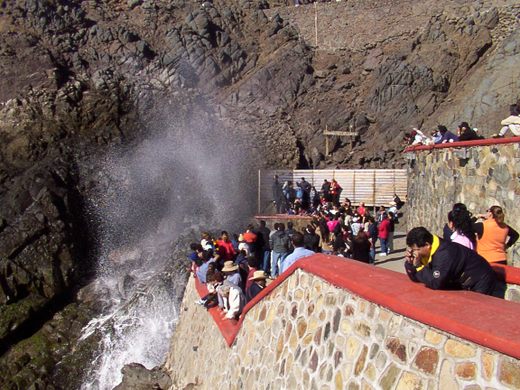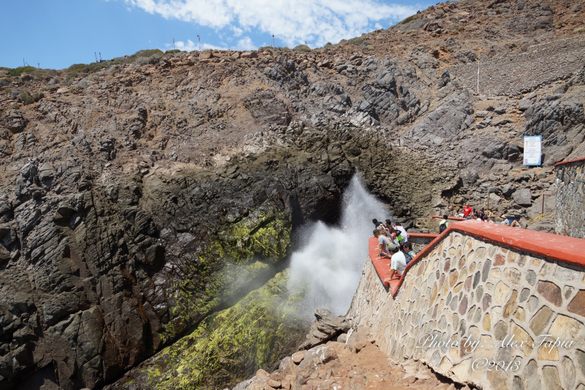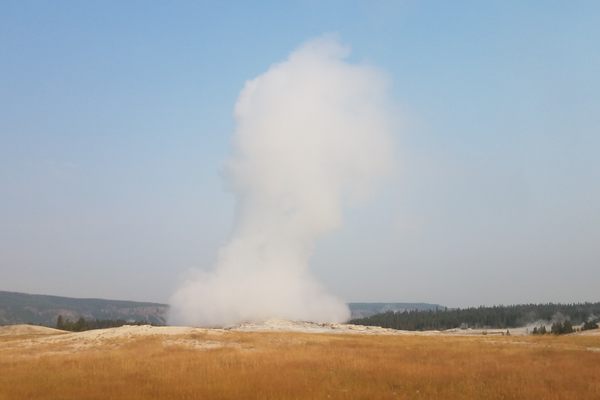AO Edited
La Bufadora
Legend says one of the world's largest marine geysers is actually a whale that got wedged within the rocks.
Mexico’s Punta Banda (Banded Point) is named for the geological strata that dominate the underlying landscape. But it also features yet another geological site of intrigue: one of the most notable blowholes in North America.
The ocean’s waves push air and water through a narrow passage in the rocks. The seawater then flows through a partially submerged chamber before erupting into the air, creating one of Earth’s largest marine geysers.
Expect to get wet! Waves crash into the ocean cliff as frequently as you would imagine. Even on a calm day, this can blast a ton of water 100 feet or more above the sea. The geyser height relates to the tide level and the size of waves, so expect a better show during rough seas at high tide.
Old lore has it that a whale became wedged in the rocky point and blew water to attract its pod’s attention. Eventually, the whale turned to stone, never to be free again.
Know Before You Go
The way to La Bufadora is well marked, you will find parking nearby and walk along a well paved road to the view point. Head south on highway 1 from Ensenada and take a right on 23. By car it should take less than an hour. Alongside the road are many small shops so it looks like you're going into a flea market, just keep walking and you will come to the viewpoint.
Note: the area is more crowded when cruise ships are docked at Ensenada so plan your trip accordingly. On your way out, enjoy some tacos and have fun bartering with the tourist trap vendors. On a slow day, you will easily get the best prices.
















Follow us on Twitter to get the latest on the world's hidden wonders.
Like us on Facebook to get the latest on the world's hidden wonders.
Follow us on Twitter Like us on Facebook